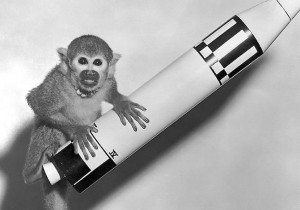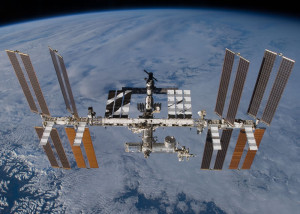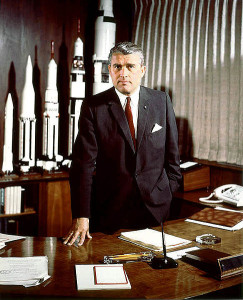 With Bush’s manned space initiative headed for the chopping block, why is NASA nuking monkeys?
With Bush’s manned space initiative headed for the chopping block, why is NASA nuking monkeys?
EnviroReporter.com – February 1, 2010
The future of manned space exploration may be revealed Monday when President Obama unveils his 2011 budget request for NASA. The budget’s approval by Congress may also determine the future of 28 squirrel monkeys and renewed animal radiation experiments.
Obama’s budget will request an extra $6 billion over five years to develop a commercial spacecraft that could taxi astronauts into low earth orbit, according to a background briefing from an Administration official Sunday. Obama’s 2011 budget for NASA increases funding $276 million to $19 billion.
Much like the Department of Defense looking to private contractors to ferry its satellites into space, NASA will have to do the same if the president isn’t stymied by Congress. Congressional delegations from Alabama, Florida and Texas will undoubtedly be upset with no additional funding to continue President Bush’s ambitious Constellation initiative launched in 2004.
Constellation envisioned sending humans back to the Moon by 2020 with Mars exploration to follow. An Obama commission has already reported that it would take at least $3 billion a year to finance human spaceflight beyond Earth and extend the International Space Station’s life until 2020. Subsequent yearly increases will bring it to $21 billion in 2015. NASA would receive $100 billion over the next five years with Congressional approval.
The space agency will run out of rockets to put humans in space once the Space Shuttle is retired this year, after four more flights, costing 7,000 jobs. American astronauts will have to hitch rides into space now that two new rockets, the Ares I, and the larger Ares V have been cut.
President Obama has a fight on his hands with Congress over this radical departure in NASA focus. Last year, lawmakers made cuts to Constellation programs subject to their approval. That provision sent a “direct message that the Congress believes Constellation is, and should remain, the future of America’s human space flight program,” wrote Sen. Richard Shelby, R-Ala., in December.
America’s manned space program is at a crossroads. Most if not all NASA missions can be completed robotically, leaving Constellation supporters with the main argument that human exploration inspires the nation. That powerful notion worked during the Cold War, but may not now considering the astronomical cost of keeping people alive in the forbidding environment of space.
The question of unmanned space exploration also gives cause to re-examine of NASA’s claimed need to irradiate primates to see how humans in space will function when bombarded with intense radiation outside the protective atmosphere of the Earth. It also reignite debate over the space agency’s high-flying schemes based on outdated notions of space exploration first envisioned by Nazis that have been eclipsed by technological advancements in robotics.
NASA’S Nazi Past
Bush’s vision for space exploration actually came from the leader of a large group of 120 German scientists captured at the end of World War II, Waffen SS-Sturmbannführer Wernher von Braun.
Von Braun’s feared V-2 rocket rained death and destruction upon English and Belgian civilians during the London Blitz. The weapons were built by concentration camp slaves who died by the thousands working on them. The prisoners perished from starvation, poisoning and execution.
But apparently one man’s Nazi is another man’s hero.
“Wernher von Braun is, without doubt, the greatest rocket scientist in history,” according to NASA’s website biography. “His crowning achievement, as head of NASA’s Marshall Space Flight Center, was to lead the development of the Saturn V booster rocket that helped land the first men on the Moon in July 1969.”
Given NASA’s indifference to von Braun’s Nazi past, the agency’s ethical orbit may be far enough out that the questionable nuking of monkeys is justified. Comments by the project’s leader Jack Bergman also suggest that NASA is hoping to find that the intense outer space radiation astronauts would experience might not impair them as much as previously known, making manned space travel possible even if potentially harmful for the crews.
Regardless of President Obama’s refigured vision for America’s space program, powerful and entrenched forces are not likely to back down in their fight to protect their investment in a continued manned program, $9.1 billion of which has already been spent on Constellation.
In the fight over whether Constellation is totally eclipsed or not is a relatively small study, yet to be finally approved, that could prove to be a stumbling block: irradiating monkeys with massive doses of radiation to learn just how much radiation astronauts endure.
If tests show that the monkeys survive intense nuclear bombardment, the findings could support Constellation by suggesting that it’s safe to nuke humans with powerful radiation for months at a time even though no amount of ionizing radiation is safe according to a 2005 National Academies of Sciences Report.
“The scientific research base shows that there is no threshold of exposure below which low levels of ionizing radiation can be demonstrated to be harmless or beneficial,” said committee chair Richard R. Monson, associate dean for professional education and professor of epidemiology, Harvard School of Public Health, Boston. “The health risks – particularly the development of solid cancers in organs – rise proportionally with exposure.”
Furthermore, the National Research Council cautioned in early 2008 that present technology to protect against space radiation “would not allow a human crew to undertake a Mars mission and might also seriously limit long-term Moon activity.”
Unless Obama convinces Congress to scuttle Constellation entirely, based on economic and ethical intelligence, monkeys and humans will be bombarded with withering amounts radiation, not in the name of good science, but in the name of the national will. It’s a plan only a Nazi could love.
We Robot
Keeping astronauts alive in space, however heroic, costs up to 100 times more than using robotic spacecraft and rovers. Critics of manned interplanetary exploration point out that we are already on Mars with the rovers Opportunity and Spirit which have outlived their original missions by years and have provided NASA far more valuable data than ever imagined.
Considering the advancements in computers since the days of the Apollo Moon landings, where today’s common Blackberry has more computing power than all of NASA had guiding the exploration, robotics are superb interplanetary explorers.
Even if Americans landed again on the Moon or even Mars, they would need robotics and computer technology to accomplish every task including the primary one, keeping the astronauts alive. Robots don’t run out of air, freeze to death, get burned alive or have their brains scrambled by radiation so intense NASA still can’t protect against it.
Robots just cease functioning. Or at least they’re supposed to. Two weeks ago, NASA announced that the still-roving Spirit could rove no more and was repositioning itself to catch the Sun’s faint rays to power out of hibernation once Mar’s fierce winter is over in about six months.
Before getting stuck in sand, Spirit had already outlived its original three-month mission lasting six years, traveling twelve miles on the Martian surface and successfully surviving thousands of daily temperature swings of as much as 150 degrees Fahrenheit.
Still, Bush’s Constellation program continues on, tackling one of the main obstacles to manned travel and exploration beyond Earth’s protective atmospheric bubble: radiation. Intense high energy radiation in outer space could fry astronauts’ brains making it impossible operate spacecraft or undertake experiments.
That’s where Constellation’s squirrel monkeys come in. NASA plans to spend $1.75 million to inject over two dozen monkeys with huge doses of gamma radiation to see, essentially, what happens. The agency then plans to extrapolate data from the tests, which can make the animals go mad attacking themselves as their teeth fall out as a result of the radiation exposure.
Fry to Fly
The monkey study, yet to be approved by the Brookhaven National Laboratory, is the first of its kind in nearly three decades. The analysis is reminiscent of the experiments done on animals and humans that led to the biological nuclear and chemical wastes that resulted in a dump on Department of Veterans Affairs land in the upscale Los Angeles neighborhood of Brentwood.
Those sometimes-gruesome experiments were condemned by medical professionals and political leaders in the 1990s as part of the larger issue of experimenting with unaware humans who had a variety of radiation tests performed on them in the 1950s and 1960s.












Recent Comments